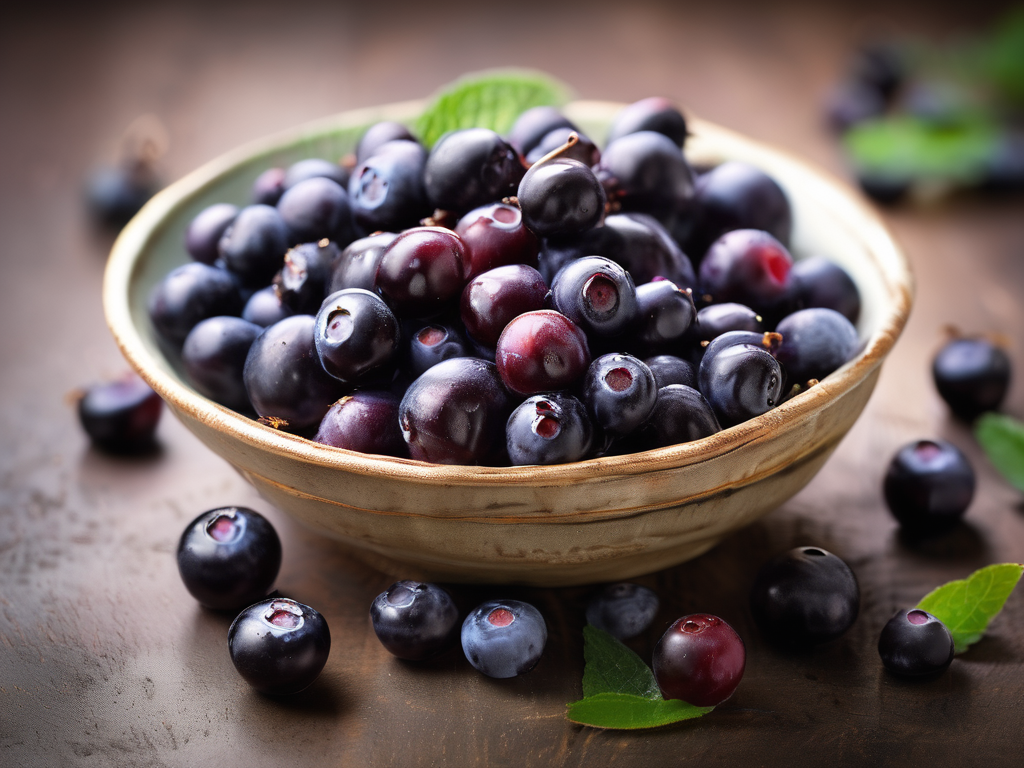
When to Toss Out Cascade Huckleberry to Avoid Food Poisoning
Get Your Free Food Safety Cheat Sheet
30 most common foods with instant answers. Print it and stick it on your fridge—completely free!
When to Toss Out Cascade Huckleberry to Avoid Food Poisoning
Cascade Huckleberry is a delicious and nutritious fruit that can be enjoyed in various dishes and desserts. However, like all perishable foods, it can spoil and lead to foodborne illnesses if not stored and handled properly. In this blog post, we will discuss when to toss out Cascade Huckleberry to avoid food poisoning, as well as provide you with practical tips on food safety and storage. (Cascade huckleberry)
Understanding Cascade Huckleberry
Cascade Huckleberries are small, round berries that are native to the Pacific Northwest. They are known for their deep purple color and sweet-tart flavor, making them a popular ingredient in jams, pies, and smoothies. These berries are rich in antioxidants and vitamins, making them a healthy addition to your diet.
Proper Storage of Cascade Huckleberry
To ensure the freshness and safety of your Cascade Huckleberries, it is essential to store them correctly. Here are some tips on how to store Cascade Huckleberries properly:
- Refrigeration: Store fresh Cascade Huckleberries in the refrigerator in a breathable container or perforated plastic bag. This will help prevent the berries from becoming too moist and developing mold.
- Freezing: If you have an abundance of Cascade Huckleberries, you can freeze them for later use. Wash and dry the berries thoroughly before freezing them in an airtight container or freezer bag.
Signs of Spoiled Cascade Huckleberry
It is crucial to be able to identify when Cascade Huckleberries have gone bad to avoid food poisoning. Here are some signs that your Cascade Huckleberries may be spoiled:
- Mold: If you notice any fuzzy white or green mold on the berries, discard them immediately.
- Slimy Texture: Spoiled Cascade Huckleberries may have a slimy or mushy texture.
- Unpleasant Odor: If the berries have a sour or off-putting smell, it is best to throw them away.
- Discoloration: Any signs of discoloration or browning on the berries indicate spoilage.
When to Toss Out Cascade Huckleberry
To prevent food poisoning, it is essential to know when to toss out Cascade Huckleberries. Here are some guidelines to follow:
- Fresh Berries: Fresh Cascade Huckleberries should be consumed within 1-2 weeks of purchase. If you notice any signs of spoilage before that time, discard them.
- Frozen Berries: Frozen Cascade Huckleberries can be stored for up to a year. However, if you notice any signs of freezer burn or off flavors, it is best to discard them.
- Prepared Dishes: If you have used Cascade Huckleberries in a dish or dessert, it is essential to refrigerate any leftovers promptly. Consume the leftovers within 3-4 days to ensure their safety.
Food Safety Tips
In addition to knowing when to toss out Cascade Huckleberries, here are some general food safety tips to keep in mind:
- Wash Hands: Always wash your hands before handling food to prevent cross-contamination.
- Separate Foods: Keep raw meats and poultry separate from other foods to prevent the spread of bacteria.
- Cook Thoroughly: Cook foods, especially meats, to their recommended internal temperatures to kill any harmful bacteria.
- Check Expiration Dates: Always check the expiration dates on packaged foods and toss out anything that is past its prime.
Conclusion
Cascade Huckleberries are a delicious and nutritious fruit that can add flavor and health benefits to your meals. By understanding when to toss out Cascade Huckleberry to avoid food poisoning and following proper food safety practices, you can enjoy this fruit safely. Remember to store your Cascade Huckleberries correctly, watch for signs of spoilage, and follow food safety guidelines to protect yourself and your loved ones from foodborne illnesses. (Cascade huckleberry)
Authoritative Food Safety References
These agencies and university labs inform every tip and health precaution we publish.
USDA FoodKeeper – Cold Storage Guidelines
Official refrigerator, freezer, and pantry timelines maintained by the U.S. Department of Agriculture.
Visit USDA FoodKeeperFDA Produce Safety Rule & Grower Guidance
Field-to-fridge handling practices that prevent contamination of fruits, vegetables, and leafy greens.
Visit FDA Produce SafetyCDC Foodborne Illness Prevention Hub
Surveillance-backed guidance on pathogens, symptoms, and steps to reduce foodborne illness risk.
Visit CDC Food SafetyUC Davis Postharvest Technology Center
University research detailing optimal storage atmospheres for produce after harvest.
Visit UC Davis PostharvestPenn State Extension – Home Food Preservation & Safety
Peer-reviewed extension bulletins on safe canning, chilling, and reheating practices.
Visit Penn State ExtensionGet Your Free Food Safety Cheat Sheet
30 most common foods with instant answers. Print it and stick it on your fridge—completely free! Want more? Upgrade to the complete guide with 70+ foods.
Scan your food directly and get instant safety info using our AI-powered camera feature.